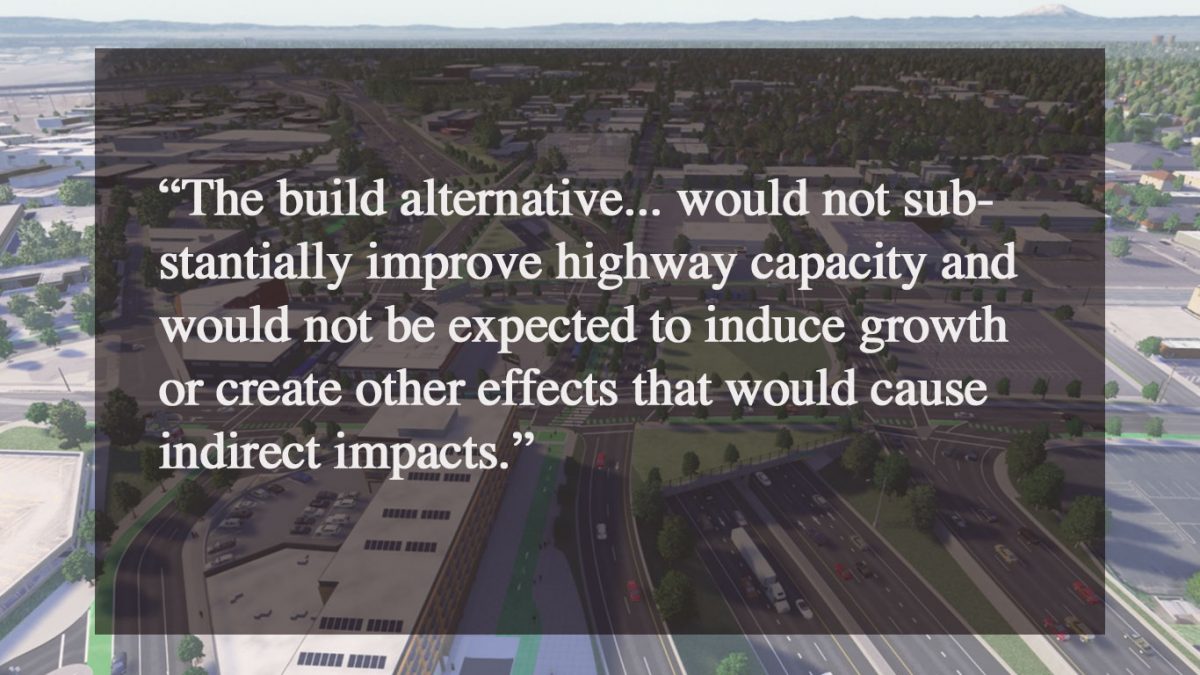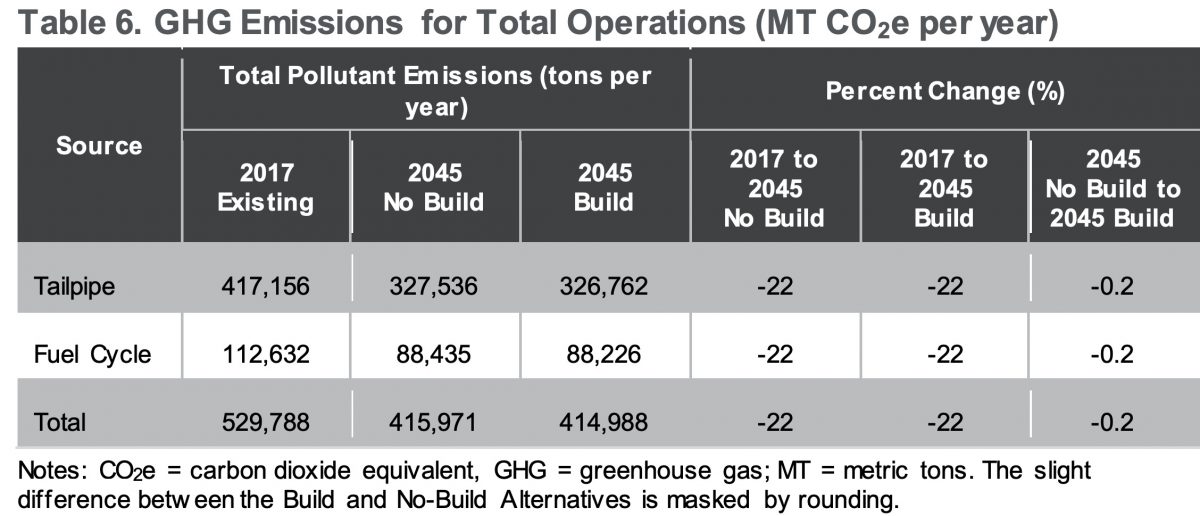As expected, the Oregon Department of Transportation released the Environmental Assessment for the I-5 Rose Quarter Project today. Now the clock starts ticking on the 45-day comment period.
The Assessment is very lengthy and technical. It’s easy to understand why PBOT Transportation Commissioner Chloe Eudaly, the Audubon Society of Portland, OPAL Environmental Justice Oregon, No More Freeways, and dozens of other groups requested more time to analyze the documents and prepare their feedback.
We’ll be taking a closer look at the Assessment, particularly its findings on the project’s impacts on greenhouse gas emissions, air quality, traffic volumes, and so on. Another valuable things this EA document provides is a clear look at the bicycling infrastructure elements of the project (something we’re overdue on sharing in detail here on the front page).

A few things of note that I found in a quick scan is that ODOT claims that if they build the project GHG will actually go down (versus current conditions). They also promise that the new lanes will come with an increase in speeds and substantial time savings for I-5 users. “The build alternative is a safety improvement project that would not substantially improve highway capacity and would not be expected to induce growth or create other effects that would cause indirect impacts,” states the Climate Change Technical Report (on page 34).
Advertisement
Also of note is the Executive Summary where ODOT addresses “anticipated adverse impacts” of the project. Where I think many transportation reform-minded readers would consider the expansion of an urban freeway and the improvements to driving access that comes with it to present obvious adverse impacts (by encouraging the use of the most inefficient and destructive form of transportation available), in their answer to this question ODOT only lists negative impacts that would occur during construction.
Here’s a summary of the main findings as provided in a statement by ODOT:
Improved safety for all transportation modes – New crossings over I-5, protected bike lanes, wider sidewalks, improved striping and upgraded signals would mean safer local streets and new connections for everyone. On I-5, new shoulders would give disabled vehicles a way to get out of travel lanes and new ramp-to-ramp connections will mean less stop and go traffic, less emergency braking and more time and space for drivers to merge, which will reduce frequent crashes and improve travel times.
Improved air quality – The assessment modeled air pollutant emissions, which found that air quality would slightly improve with the project, as compared to not building the project. The estimated reduction in emissions caused by the project would likely be due to the higher speeds and less idling on the highway and reduced congestion from the project. Building the project “is not expected to cause air quality impacts nor contribute to cumulative effects on air quality beyond temporary construction effects, which would be addressed by requiring contractors to implement a variety of mitigation measures.”
Slightly decreased carbon emissions. As with the reduction in overall air pollution, greenhouse gas emissions would slightly reduce with the project, as compared to not building the project. Emissions would be slightly better with the project due to reduced congestion and fewer starts and stops within the project area. “Because greenhouse gas emissions have been identified as a primary cause of climate change effects, any potential decrease in these emissions would be expected to support emission-reduction efforts intended to reduce future climate-related impacts,’” the assessment found.
Benefits for communities – The assessment found that the project, as proposed, would improve access to public transit; improve mobility and safety for pedestrians, bicyclists, and transit riders; and improve connections to areas east and west of I-5 provided by the new highway covers and the Clackamas bicycle/pedestrian overcrossing.
A proposed sound wall would reduce noise levels. A sound wall, recommended for the area between I-5 and Harriet Tubman Middle School, would reduce highway noise inside the school. “This would be a beneficial reduction in noise compared to existing noise levels at the school,” the environmental assessment found.
You can view all the documents here. ODOT has also just released an online open house that will be available through April 1st. Happy reading, and let us know if you find anything interesting. We’ll be posting more here on the Front Page in the coming weeks.
In related news, the No More Freeways coalition is hosting a volunteer orientation event this coming Wednesday, February 20th. They’re looking for people to help them hand out flyers, testify, plan events, and strategize.
ODOT will host a public open house on March 7th from 5:30 to 8:00 pm at Leftbank Annex (101 N Weidler) and the big public hearing will take place on March 12th from 4:30 to 6:00 pm at the Oregon Convention Center.
Once you’re ready to comment, you can do so via email to ODOT (Attn: Megan Channell, 123 NW Flanders St., Portland Oregon 97209), by leaving a message at (503) 423-3760, or by emailing info@i5rosequarter.org.
— Jonathan Maus: (503) 706-8804, @jonathan_maus on Twitter and jonathan@bikeportland.org
Never miss a story. Sign-up for the daily BP Headlines email.
BikePortland needs your support.




